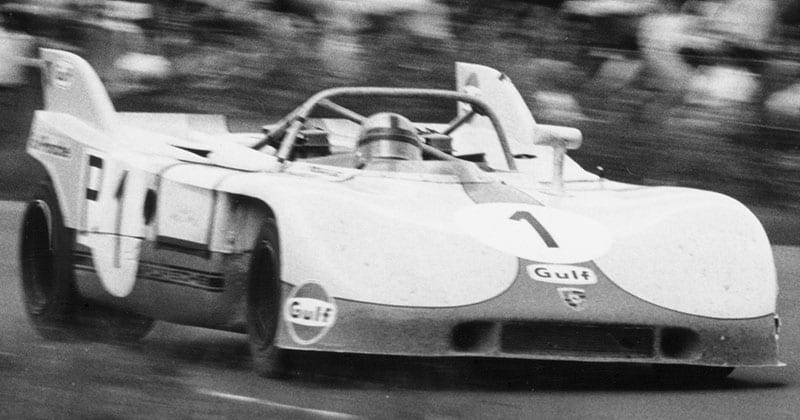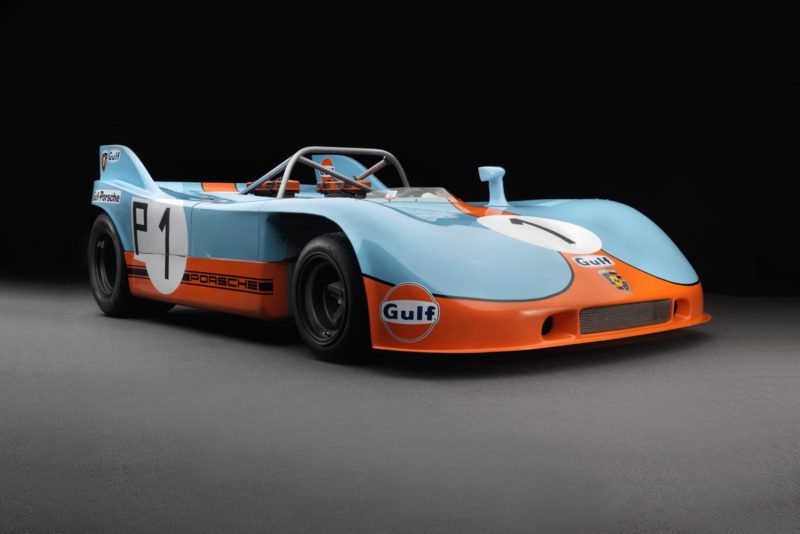Tech Specs
Flat-eight air-cooled engine, mounted midship, twin overhead camshafts, fuel-injected, 2997 cc, 360 hp at 8400 rpm
Before/After
1971 Porsche


About the 1971 Porsche 908/03
The intensity with which Porsche pursued the world championship in 1970 and 1971 is indicated by the 908/3. It was produced to win but two races: the Targa Florio and Nürburgring, twisty, difficult tracks where the 917’s size and power were a handicap.
Predecessor 908s had been built as coupes or spyders, the latter evolving into a smooth flat shape that earned the fishy nickname “Flounder.” The 908/3 was produced only as a spyder, and would be dubbed the “miracle Porsche” by the Italians.
Only the engine remained the same, and it gave away at least 65hp to the rival three-liter 312PB Ferrari. Relying on their mastery of featherweight design, Piëch’s engineers produced a car virtually supernatural in its weight saving, coming to the grid at a mere 540kg. Though the 908/2 had been easily the lightest car in its class, the 3 was lighter yet by a full 100 pounds through the extensive use of titanium. Its space frame weighed but 48 pounds; its plastic and foam body another 26.5.
Just 13 908/3s were produced: eleven in ’69-’70, two in ’71. Because of their extraordinary lightness, racing pundits predicted widespread structural failures. The pundits were wrong. A one-two finish in both the Targa and Nürburgring in 1970 saw to that; although the ’71 Targa was a driver error fraught crash out, a three car sweep of the `Ring put the final event back on the track.
The only 908/3 breakages occurred in the two cars built in 1971 and only because their frames had not been built to specification. The display car was one of them. Still, at the 1971 Nürburgring, Pedro Rodriguez and Jackie Oliver joined in the three-car Porsche sweep, nursing this car across the finish line to second place despite a broken chassis.
The 908/3’s win rate was an astounding 75%. Even more astounding is how long the car’s basic design remained competitive. With the 908/3, Piëch and company moved far from the 910 design-of-themonth days. Like the 1927 Delage Grand Prix car, this Porsche was so brilliantly effective that it remained competitive for more than a decade. A 1971 configuration 908/3 won its last World Championship race at Silverstone, England in 1980.
Photos – Peter Harholdt



















